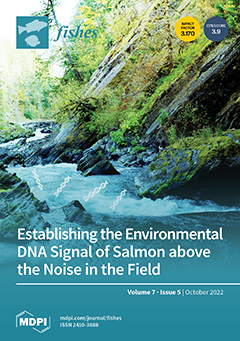Common carp (
Cyprinus carpio) is an economically important fish worldwide, with many of its species bred for consumption. However, there are few reports on the comprehensive comparative analysis of the muscle nutritional quality and stress resistance characteristics of different common carp species. In this study, after 15 months of feeding in the same environment, the nutritional components, serum biochemical indices, liver antioxidant and intestinal digestive enzyme activities, and muscle growth-related gene expression were determined in Songpu mirror carp (SPM;
Cyprinus carpio Songpumirror), Heilongjiang wild carp (HLJ;
Cyprinus carpio haematopirus), cold-resistant strain of purse red carp (CPR;
Cyprinus carpio ‘Red purse cold-resistant’), Songhe carp (SH;
Cyprinus carpio ‘Songhe’), and Songpu carp (SP;
Cyprinus carpio Songpu). Muscle nutrient composition showed that HLJ had a significantly lower crude fat content and higher docosahexaenoic acid (DHA) + eicosapentaenoic acid (EPA) proportion than the other four common carp species (
p < 0.05). The contents of lysine (Lys) and aspargine (Asp) were significantly higher in the CPR than in other species (
p < 0.05). Serum biochemical parameters showed that total protein (TP), total cholesterol (T-CHO), triglycerides (TG), and low-density lipoprotein (LDL) were significantly lower in SPM than in the other species (
p < 0.05). The results of tissue enzyme activity showed that the activities of superoxide dismutase (SOD) and catalase from Micrococcus lysodeikticus (CAT) in the liver were significantly higher, while the activities of lipase (LPS), trypsin (TRS), and α-amylase (α-AMS) in the intestine were significantly the lower in HLJ than in the other species (
p < 0.05). In addition, the relative expression levels of growth hormone (
GH), growth hormone receptor (
GHR), insulin-like growth factor 1 (
IGF1), insulin-like growth factor receptor (
IGF1R), and myoblast determination factor (
MyoD) in SP and SH were significantly higher than those in the other species, while the relative expression of myostatin (
MSTN) in HLJ was significantly higher (
p < 0.05). Therefore, there were significant differences in muscle nutritional quality, serum biochemical indices, liver, and intestinal enzyme activities, and muscle growth potential among the five species of common carp. This study could provide a theoretical basis for the germplasm evaluation and variety improvement of common carp.
Full article





